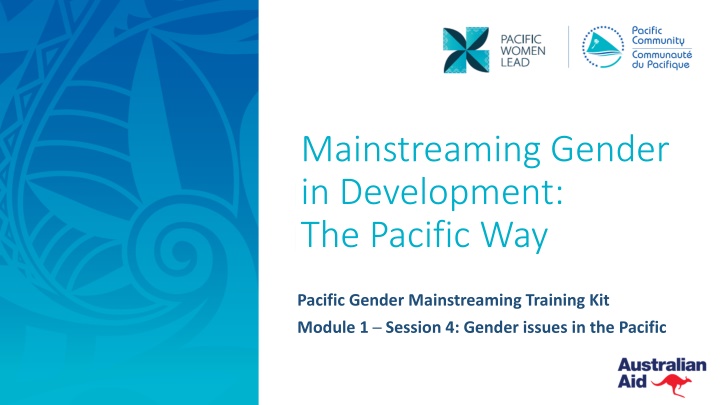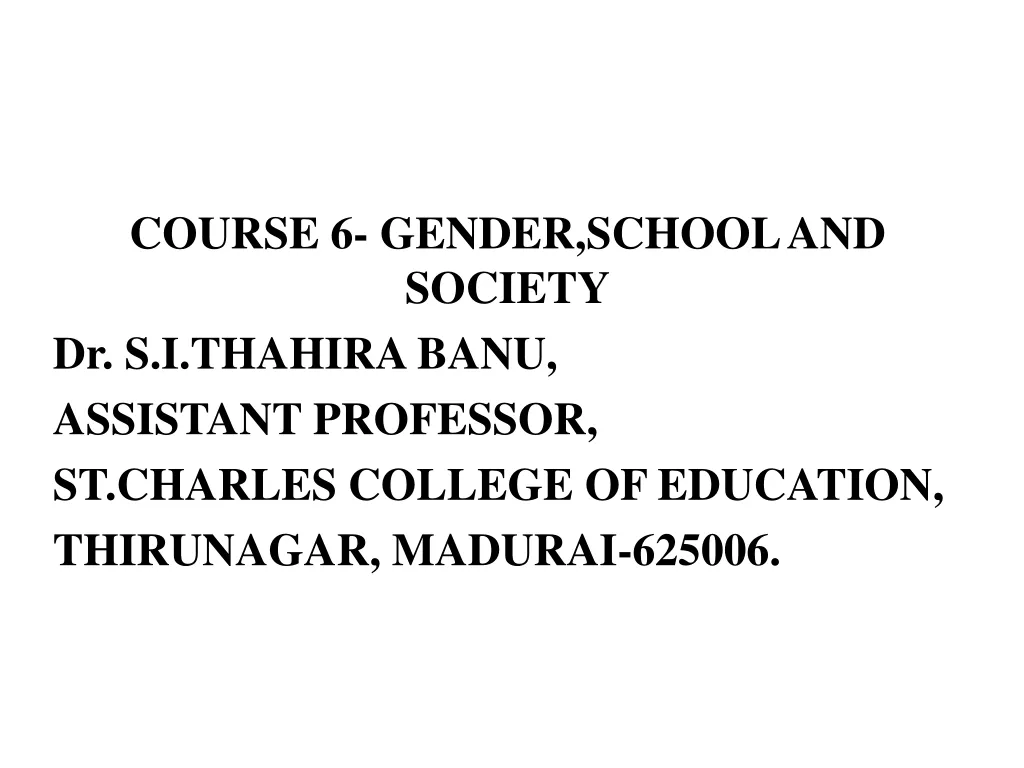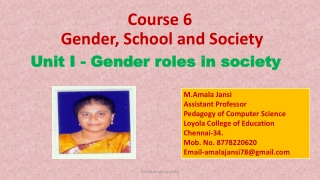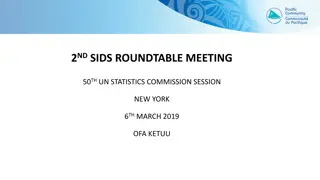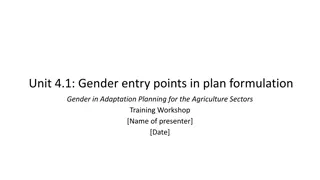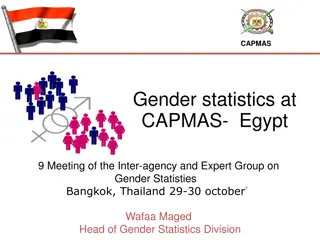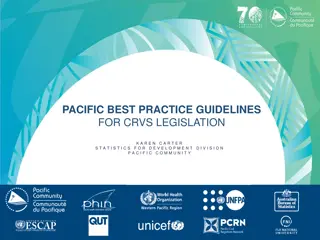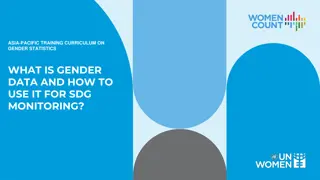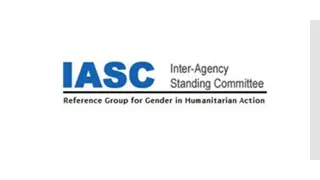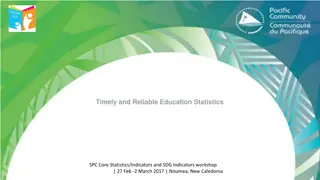Gender Issues in the Pacific: Key Statistics
Explore critical gender issues in the Pacific region through key statistics revealing disparities in employment, violence, household dynamics, pay gaps, and economic contributions of women. Enhance awareness and understanding of gender-related challenges faced by Pacific Island countries and territories, providing valuable insights for effective policy-making and advocacy.
Download Presentation

Please find below an Image/Link to download the presentation.
The content on the website is provided AS IS for your information and personal use only. It may not be sold, licensed, or shared on other websites without obtaining consent from the author.If you encounter any issues during the download, it is possible that the publisher has removed the file from their server.
You are allowed to download the files provided on this website for personal or commercial use, subject to the condition that they are used lawfully. All files are the property of their respective owners.
The content on the website is provided AS IS for your information and personal use only. It may not be sold, licensed, or shared on other websites without obtaining consent from the author.
E N D
Presentation Transcript
Mainstreaming Gender in Development: The Pacific Way Pacific Gender Mainstreaming Training Kit Module 1 Session 4: Gender issues in the Pacific
Learning outcomes Learning outcomes At the end of this session you will be able to: name critical gender issues facing Pacific Island countries and territories explain why being aware of gender issues is relevant to your work.
Question 1 Question 1 In Melanesia, on average, men outnumber women in formal employment by: a)3 to 1 b)2 to 1 c) Women outnumber men
Question 2 Question 2 The percentage of Pacific women who have experienced sexual violence by their intimate partners in their lifetime is: a)63% b)50% c) 43%
Question 3 Question 3 Women and girls with a disability are victims of physical or sexual abuse: a) less than women and girls without a disability b) 2 to 3 times more likely c) Very rarely
Question 4 Question 4 In 2009 in Vanuatu, households headed by a single female head (that is, with no spouse present) a)owned more cash crops than only male-headed households b)owned fewer cash crops than single male-headed households c) owned about the same amount of cash crops as single male- headed households
Question 5 Question 5 In the Cook Islands, the gender pay gap (ratio of women s average earnings to men s average earnings, expressed per 100) in 2011 was: a)96 b)72 c) 80
Question 6 Question 6 In the household sector, the contribution of handicrafts to the gross domestic product in RMI in 2012 was estimated at: a)USD 3.4 million b)USD 2.7 million c) USD 1.5 million d)USD 10.5 million
Question 7 Question 7 In Solomon Islands, where 90 per cent of vendors are women, the estimated annual turnover of Honiara's central market is a)around USD 10 to 16 million b)Around USD 2 to 5 million c) Around USD 7 to 9 million
Question 8 Question 8 Collecting and fetching drinking water during the drought in RMI increases the burden of men and young men: a)up to two hours a day b)up to one hour a day c) no difference because women are doing it
Question 9 Question 9 In Palau, the proportion of deaths related to Non-communicable Diseases (NCDs) is: a)6 out of 10 deaths b)7 out of 10 deaths c) 8 out of 10 deaths
Question 10 Question 10 Sexual harassment is frequent in the workplace, but data about this are scarce. A study conducted in Fiji in 2016 revealed that the number of women interviewed who had been sexually harassed in the workplace is: a)1 in 5 b)1 in 3 c) 1 in 10
Question 11 Question 11 An Australian commissioned report released in 2008 has estimated the value of unpaid household work in Fiji at almost: a)USD 117 million b)USD 324 million c) USD 480 million
Question 12 Question 12 In Federated States of Micronesia, Niue, Rarotonga (Cook Islands), and rural areas of Solomon Islands, the population significantly over- represented among the poorest households is: a)Households headed by men composed of more than seven people b)female-headed households c) Households with migrant workers
Question 13 Question 13 In which Pacific country do women constitute at least 50% of the members of parliament? a)Palau b)French Polynesia c) None
Question 14 Question 14 In Tonga, women go fishing. a)No way! b)Of course they do! c) A little bit to help their husband only
Evaluation questions Evaluation questions 1. List four critical gender issues in Pacific Island countries and territories. 2. Explain why being aware of gender issues may be relevant to your work.
Evaluation questions Evaluation questions 1. Name one critical gender issue in Pacific Island countries and territories. a) Women take all decisions everywhere. b) Girls perform well at school. c) Men share household chores. d) There is a high incidence of violence against women.
Evaluation questions Evaluation questions 2. Why will being aware of gender issues be relevant to your work? a) Help develop inclusive programmes and services. b) Help me make people do what I want. c) Help me save my budget by hiring more women. d) Help me explain why we should not recruit women.
